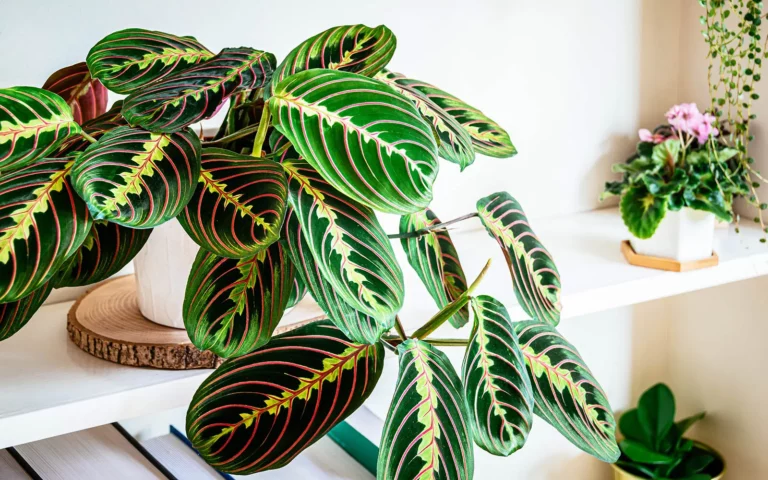About the Prayer Plant
Maranta Leuconeura, more commonly known as prayer plants are native to South America, but they are very popular plants to own all around the World. Not only do prayer plants thrive in simple living conditions, but they are also surprisingly easy to propagate.
There are four main types of Prayer Plants:
- Maranta leuconeura ‘Erythroneura’ also known as the Red Prayer Plant
- Maranta leuconeura var. ‘Massangeana’ – the Black Prayer Plant
- Maranta leuconeura ‘Kerchoveana’ – the – Green Prayer Plant
- Calathea Ornata (Pinstripe Calathea)
Propagation
There are several ways to propagate those gorgeous house plants – from cuttings – just like the pothos plant -, in water, in soil or from division. If you want to check out a step-by-step guide, head over to our Prayer Plant Propagation article!
Common Pests
- Spider mites
- Mealybugs
- Aphids
Care
Prayer Plants are not especially hard to care for, but you need to pay attention to a few key aspects. First of all, Prayer Plants thrive in moderate light, but you need to keep them away from direct sunlight because it can burn their leaves.
Second of all, they prefer moist soil, but you should never let it soak in water. Good drainage for the soil is key. As they are tropical plants, misting their leaves also helps.
Also, don’t forget that they prefer 65 and 70 °F and anything below 55 °F will possibly damage the plant (turning their leaves brown).
Frequently Asked Questions
Nope, thankfully, Prayer Plants are safe for cats. They are non-toxic.
Are prayer plants toxic to dogs?
Nope, thankfully, Prayer Plants are non-toxic, thus safe for dogs.
How often to water prayer plant?
Prayer Plants like to sit in moist soil, but you should never let them soak. Do not let the soil dry out, check daily!
How to revive a prayer plant?
Misting the plant for a few days could help if there is not enough moisture in the soil. If your Prayer Plant has brown leaves, move it away from direct sunlight.
